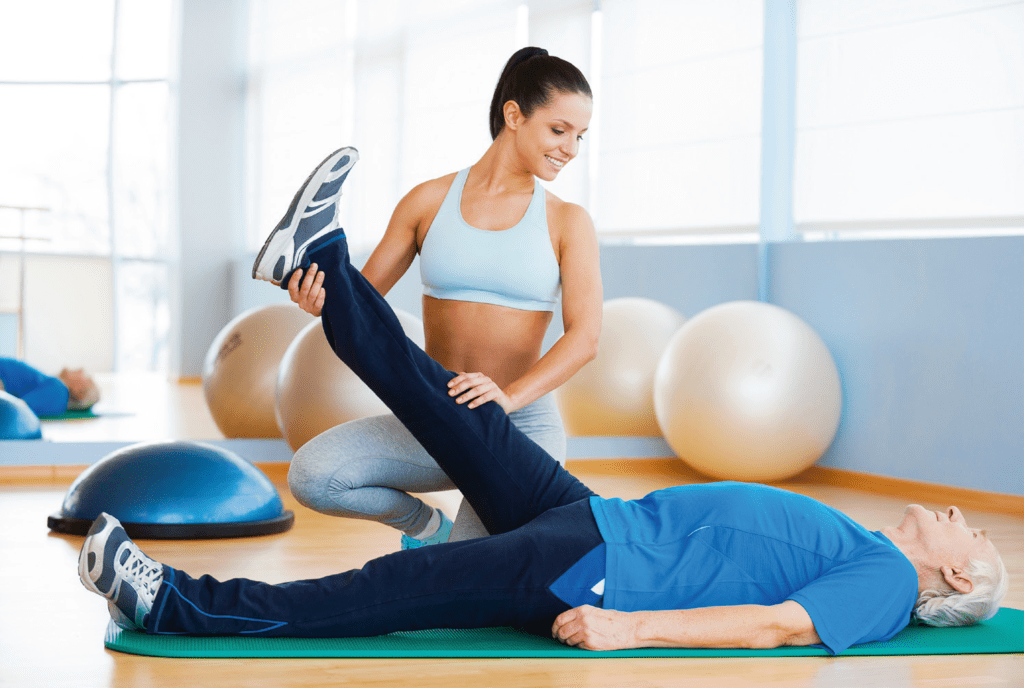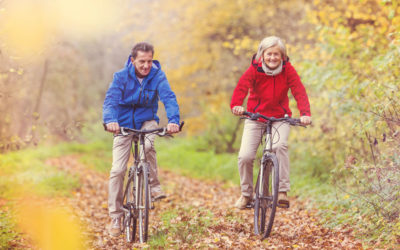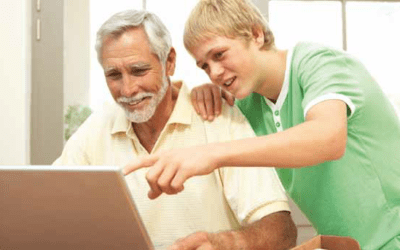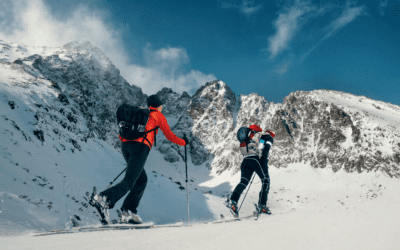As we get older, there are more and more ways to get seriously injured. Diseases like Parkinson’s, hydrocephalus, a stroke, damage to the spinal cord, etc., all can affect gait stability. Elderly people move more slowly and often require a wider stance, their strides are shorter, they have difficulty turning around without staggering. Some people even tend to stop moving altogether rather than living in constant fear of falling. This leads to muscle atrophy and general deterioration in physical condition. All of these can be helped with therapy, which stimulates both the physical and psychological aspects.
Want to learn more? Read the article by Julien Bogousslavsky and Magali Bourges.
With age, various diseases such as Parkinson’s disease, hydrocephalus (pathological expansion of the fluid spaces in the brain), a stroke, damage to the spinal cord or neuropathy of the lower limbs can affect gait stability.
Independently of their cause, gait disorders in older people lead to an increased risk of falling: in Switzerland, 30 to 45 % of people over 65 fall at least once a year. 25 % of these falls lead to injuries with significant consequences and 5 % to a bone fracture. Loss of balance also leads to a quarter of people over 80 using a walking aid.
The task of neuro rehabilitation is to prevent and limit fall risks in order to prevent loss of independence and autonomy. Furthermore, there are no drugs that improve balance and coordination.
Gait abnormalities that need to be observed
The first thing that is usually noticed about the gait of older people is that they move more slowly, but their steps are not only visibly slower, they sometimes also require a wider standing area (i.e. the floor area delimited by the feet and the area between them). They take small steps, their stride length and height are reduced, they have difficulty turning 180° safely and without staggering, they cannot turn around without staggering or trying to hold on… When walking, there may also be a very large space between the feet and the upper body may be tilted backwards. Severe impairment can sometimes lead to difficulty in initiating gait.
In order to determine the risk of falling, a balance assessment must be made, in particular, by applying pressure to the thorax, whether protective reactions are present and attempts are made to restore balance. In addition, the impact of these problems on basic activities of daily living and household chores must be assessed. It may be that the person can move safely with their doctor or therapist, but the sole ability to walk is not sufficient. Performance should not be disregarded, that is, the ability to do so in different environments (with external stimuli such as a crowd of people or different floor conditions).
The task of neurorehabilitation is to prevent and limit fall risks in order to prevent the loss of independence and autonomy.
Breaking the vicious circle of fear of falling
Older people at risk of falling get caught in a vicious circle because the fear of falling in turn leads to a fear of moving around alone at home or outside, which can severely limit activities. This decrease in activity leads to muscle atrophy and a general deterioration in physical condition. This muscle weakness in turn leads to a lack of balance and thus a risk of falling. It is therefore important to break this vicious circle through the progressive resumption of activities with therapeutic means. In therapy, the goal is to treat the deficits in order to break the cycle, while at the same time taking the psychological aspect into account. In addition, even temporary bed confinement or immobilisation in an armchair can lead to loss of movement patterns. Therefore, it is recommended to act quickly and provide regular activities suitable for the person as early as possible.
Rehabilitation is also possible in old age
By assessing the balance problems, we can target the deficits and develop an individualised rehabilitation programme that is tailored to the person to achieve the mutually agreed goals.
First, the exercises must focus on static balance and the adjustment reactions related to posture. Then dynamic balance must be trained, with catch reactions, also called parachute or protective reactions.
Different activities are suggested, for example, weight bearing on only one or both feet, lateral and sagittal lunges to shift the body weight from one foot to the other, strengthening the muscles and lower limbs…
Obstacle courses allow stimulating balance while changing gait parameters: walking forwards or backwards, taking sideways steps, climbing and descending stairs, varying speed and step height, picking up more or less heavy objects from the ground, carrying and moving objects, slaloming between cones, changing direction, walking on a sloping path or unstable ground … All these exercises can be done more or less blindly or on very unstable ground similar to an air cushion. This strengthens the deep sensitivity, also called proprioception: the receptors in the joints allow the brain to be informed about the position of the body in space. This is essential to move on uneven terrain or in the dark.
In occupational therapy and physiotherapy, the goal is not primarily to improve walking distance, but rather to improve functional walking, which means trying to maintain a minimum level of independence in everyday tasks. It is important to know the person’s occupations and interests in order to tailor the training to their everyday activities.
Therefore, practical exercises are proposed to simulate the person’s daily environment: sitting on the toilet, getting into the bathtub, getting into bed, movements in the kitchen with the possibility of preparing a meal or setting the table, going to the mailbox and getting the mail… These activities can train two things: balance and attention (concentration, memory). This is essential to limit the risk of falling.
In addition, the fear of falling must be taken into account. By teaching people how to get up again independently, falls are de-dramatised. Acceptance, choice and use of a technical walking aid are part of this approach to fall prevention.
In occupational therapy and physiotherapy, the goal is not primarily to improve walking distance, but rather to improve functional walking, which means trying to maintain a minimum level of independence in everyday tasks.


It is recommended to carry out an assessment of the home: aids can be used to limit and secure spaces (bath board, handrail, shower seat …).
Sight and sensitivity play an important role
Sight is especially important on uneven or moving ground. If there is a deficit, suitable lighting is required, rooms must not be crowded and obstacles must be removed. For example, luminous strips can be stuck on stair treads and a banister can be installed in the stairwell. Also remember to remove or fix carpets.
Sensitivity of the soles of the feet is also related to balance. In the case of hypaesthesia (general reduced sensitivity to touch and pressure), good results can be achieved with rehabilitation based on stimulation by touch and vibration.
The efficiency of such a programme is of course based on an interdisciplinary treatment approach: not only rehabilitation of walking ability, but also rehabilitation of sensitivity, proprioception, cognition and work on the psychological aspects. Such a therapy programme can be carried out as part of an intensive inpatient rehabilitation or on an outpatient basis.










